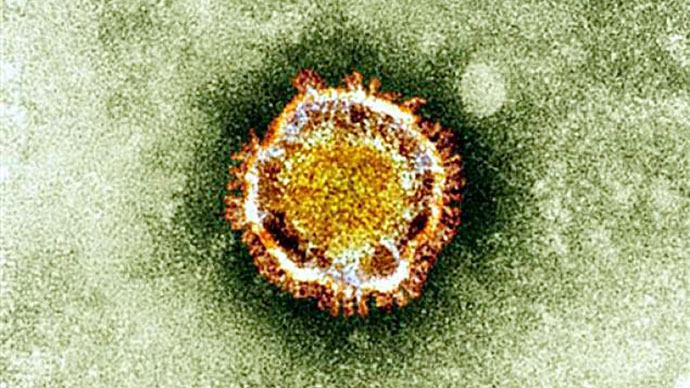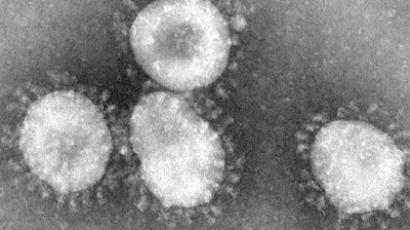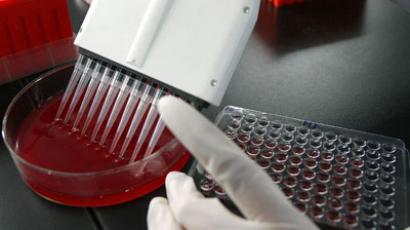Sales-driven panic? New SARS-like virus spreading worldwide, boosting media coffers

Saudi Arabia has confirmed four more cases of the new deadly coronavirus, contributing to global fears over the disease’s spread. Panic of this type has been boosting media ratings and has kept the drugs market bubbling over the last decade.
Four more confirmed cases of the novel coronavirus (nCoV) see the total number of infected in Saudi Arabia reach 28 since the disease was first identified in 2012. Ten more people have been reported to have nCoV in other parts of the world – Jordan, Germany, Britain and France.
One of the freshly-confirmed sick Saudis had already been treated and released from hospital, while three others are still receiving medical assistance, according to the Saudi Press Agency, cited by Reuters.
This surge in the number of detected nCoV cases could result from the fact that overwhelming numbers of Saudis, even those with slightest fever symptoms, have rushed to hospitals for fears of the new virus, which has been deadliest in Saudi Arabia, claiming 15 lives. The disease’s global death toll is 18.

"I did not send my son to school because of the fear of the spread of the virus," said one Saudi woman interviewed by AFP.
The news of the four new Saudi nCoV cases, comes a day after the second case of coronavirus was detected in France, where the disease transmitted between hospital roommates. The one initially suffering from the coronavirus was infected while on a Middle East tour.
The WHO is ringing alarm bells, labeling the new coronavirus as “major challenge for all of the countries which have been affected as well as the rest of the world.”
The new coronavirus (nCoV) comes from the same family as the SARS virus. Initial symptoms for the disease are flu-like, including fever above 38°C. Later on, many among the infected develop severe pneumonia and suffer kidney failure. The impact on one’s immune system is grave enough for the virus to be highly lethal. nCoV has however so far targeted mostly older people already suffering from other health problems.
The statement on the whole is more about questions than answers, as there are “many gaps in our knowledge that will inevitably take time to fill in” according to Gregory Härtl, WHO media coordinator.
Among the facts available is that the new coronavirus comes from the same family as SARS, which killed 775 people in 2003 and saw 8,000 infected. Initial symptoms of nCoV are flu-like and include a fever above 38°C, as well as coughing and sore throat.
Those infected by nCoV are mostly “older men, often with
other medical conditions” and the disease is transmitted from
person to person only when there’s prolonged close contact between
people.

Experts meanwhile try to assess the real danger, noting the new virus is far less explosive than SARS, but its death rate among detected cases is almost 50 per cent. The question however is how many milder cases of the disease go undetected.
The nCoV coronavirus is the new disease to become center of international attention. There are fears it will reach the scale of other similar diseases, like bird flu, which took 371 lives since 2003 or swine flu which saw more than 18,000 dead in its 2009 outbreak.
All of these figures, however, pale in comparison with the annual death toll from common flu.
“Seasonal influenza epidemics can affect up to 15 per cent of the population and result in up to 500 000 deaths worldwide each year”, according to WHO’s 2011 report.
The real killer, however, does not make headlines and is not something the pharmaceutical industry announces a crusade against.
All attention is usually on the new viruses, with often excessive advertising campaigns for preventing and curing them.

The most notable and controversial was the case with Swiss-produced Tamiflu. Back at the time of the swine flu pandemic, four years ago, it was pronounced cure number one for the disease. People were sweeping the drug from pharmacies’ shelves, governments stockpiled it.
Then came the eye-opener - a study published in the British Medical Journal in December 2009 found no evidence that Tamiflu lowered the risk of flu complications.
The Council of Europe eventually wanted WHO to be called to account, and possibly admit that the swine flu threat was blown out of proportion.
Overblown or not, the swine flu panic landed an estimated US$18 billion in the pockets of pharmaceutical companies’ owners.














